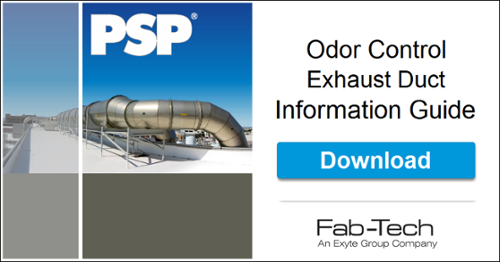Biofiltration, Solid Scavengers, and Carbon Adsorption
In a previous article about wastewater treatment plant odor control, we examined the role of wet scrubber systems in the mitigation of foul and hazardous fumes associated with hydrogen sulfide gas (H2S). In this installment, we turn our attention to three additional vapor-phase odor control technologies.
/Brightwater%20WWTP%20advanced%20wastewater%20treatment%20technologies.png?width=600&name=Brightwater%20WWTP%20advanced%20wastewater%20treatment%20technologies.png)
In addition to wet-air-scrubbing, wastewater treatment plants today have access to a variety of methods for treating ventilation-air and/or biogas. These include biofiltration, solid scavengers and carbon adsorption.
These systems can be deployed in foul air locations like the headworks, wet wells and biosolids areas, but each has its own set of requirements and considerations that must be factored.
BIOFILTRATION
"Simple" biofiltration works by passing contaminated air through a packed bed of organic material such as compost, peat or mulch.
/Permashield%20Pipe%20on%20biofiltration%20bioreactor.png?width=296&name=Permashield%20Pipe%20on%20biofiltration%20bioreactor.png)
Odorous compounds are transferred into a liquid phase, or biofilm, on the surface of the filter bed and effectively consumed by micro-organisms.
While "simple" biofilters work well at eliminating hydrogen sulfide, mercaptans and other sulfides, "advanced" systems are often necessary to overcome some common challenges.
To gain greater control over the media function and reduce the risk of biofilter breakdown, "advanced" biofiltration systems accommodate a variety of engineered filter media as well as "static" and "moving" filter classes.
Additionally, these systems are often enclosed and modularized to deliver a fully integrated unit which regulates airflow, maintains media stability and guards against environmental fluctuations.
Right - A multi-stage advanced bioreactor/biofilter system being fitted with Fab-Tech's fluoropolymer coated stainless steel fume exhaust duct.
SOLID SCAVENGERS
Solid scavengers are specific polymers, or resins, that are grouped to react with and deactivate targeted impurities within a vapor or liquid stream. As a vapor-phase wastewater treatment technology, scavengers react with hydrogen sulfide (H2S) and light mercaptans to create stable and inactive compounds. The benefit here is that spent media can be handled with relative ease compared to carbon adsorption.
One downside is that scavengers from anaerobic processes cannot be regenerated from the spent media once the reaction is complete. In aerobic applications, however, the scavengers can be regenerated since they only serve as a catalyst to the reaction and are not consumed by it.
Solid scavenger systems can utilize organic or inorganic based substrates. The organic substrate is typically made of wood. This can raise some fire-safety concerns since the reaction byproduct is iron sulfide, and when iron sulfide reacts with air it can generate substantial heat.
Ceramic substrates tend to alleviate this safety concern. The use of inorganic substrates has been gaining traction in the treatment of biogas and odor control ventilation due to low investment costs and its similarities to single-stage wet scrubber systems.
CARBON ADSORPTION
In this process, odorous vapors are pulled over an adsorbent bed constructed of carbon. Unlike the reactive process involved with solid scavengers, hydrogen sulfide and other sulfur compounds are simply drawn into the carbon bed without the need for chemicals or a biological process. While this system represents a simple and effective solution for removing sulfur-based compounds from the air, the spent carbon media still requires proper disposal procedures.
/Hydrogen%20sulfide%20passing%20through%20carbon%20diagram.png?width=603&name=Hydrogen%20sulfide%20passing%20through%20carbon%20diagram.png)
The disposal of spent activated carbon can be accomplished through heating, burning, or straight disposal methods. These methods are dependent on whether the carbon media has been deemed hazardous or non-hazardous by certified testing prior to removal.
Heating will restore the carbon media to its original state, whereas burning will destroy it. Disposal in an industrial landfill, of course, also eliminates the carbon media.
CONCLUSION
All three of these systems will work to remove foul air compounds, and the use of one versus another really depends on the main function and requirements of the wastewater treatment plant. Ultimately, Fab-Tech's PermaShield Pipe (PSP®), the global standard in fume exhaust duct, stands as the preferred solution for conveying foul air in wastewater odor control systems.
If you would like more information about PSP® odor control vent pipe and duct, please feel free to download our general information guide below:

OR
Click here to learn more about PSP® in wastewater odor control areas
References:
1) https://www.wwdmag.com/decentralized-wastewater/wastewater-odor-control-evaluation-technologies
2) http://www.tigg.com/carbon-disposal.html
3) H2S image courtesy of http://www.chemtube3d.com/gallery/structurepages/h2s.html

